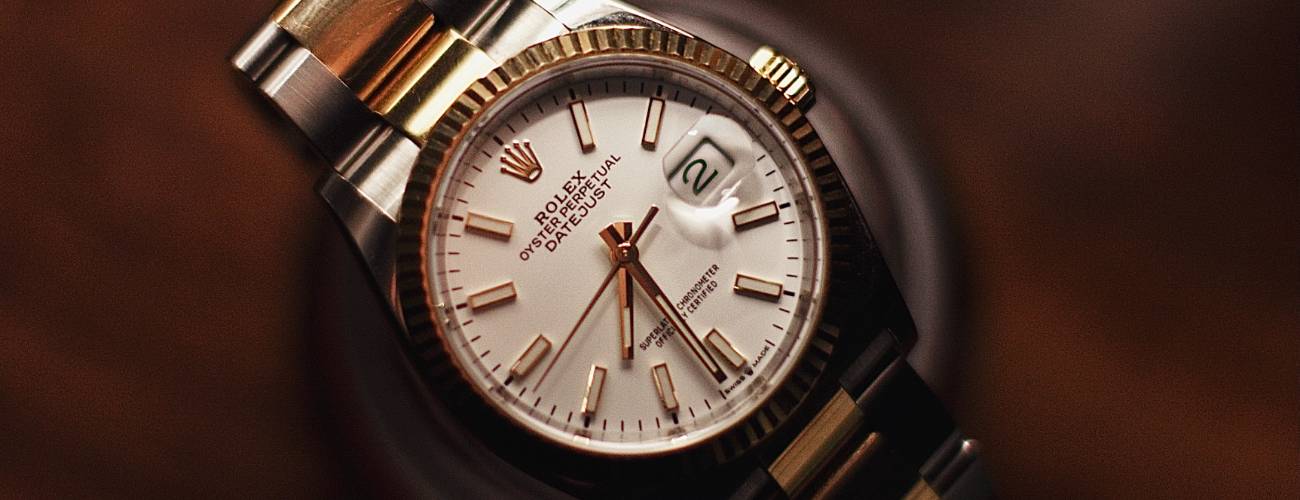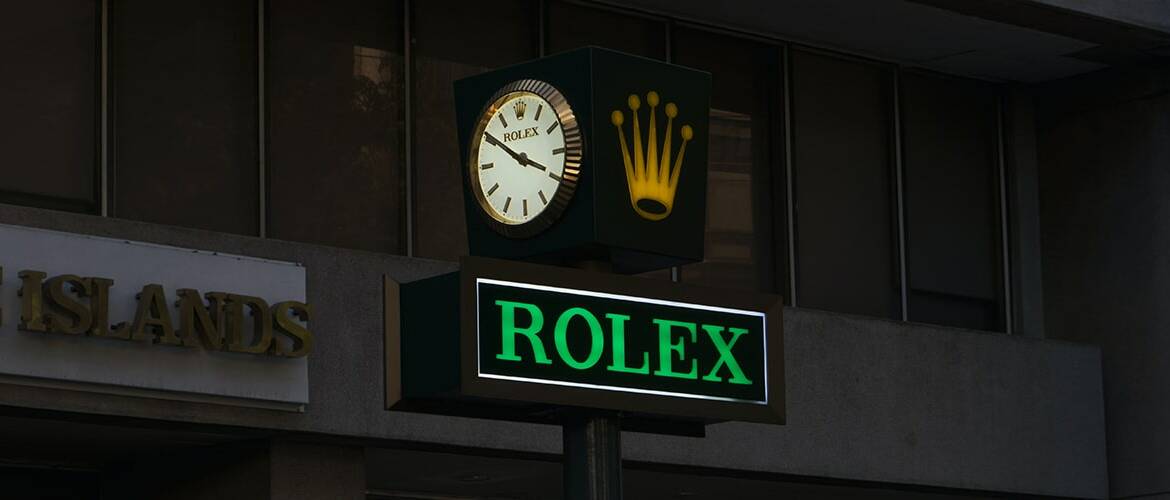Rolex Datejust vs Rolex Day-Date: What To Choose
The Rolex Datejust and Rolex Day-Date are two models that often draw attention for their exquisite design and functionality. This comparison aims to delve into these two iconic watches, helping you decide which one aligns best with your style and needs.
Heritage and Design
Rolex Datejust: A Timeless Classic

The Rolex Datejust, introduced in 1945, revolutionised the watch industry as the first wristwatch with an automatic date-changing function. This feature was not just a novelty but a significant advancement in watchmaking technology.
Over the decades, the Datejust has maintained its classic appeal while adapting to contemporary tastes. Its design has been refreshed with varied bezel styles, including fluted, smooth, or diamond-set, which complement the watch’s elegant aesthetics.
The Datejust’s dial also showcases an array of designs, from classic Roman numerals to more modern baton markers, ensuring there is a style for every preference. Its adaptability extends to its size options, ranging from the traditional 36mm to a more contemporary 41mm, catering to different wrist sizes and style inclinations.
💡 Read more: Rolex Datejust Basics.
Rolex Day-Date: The “Presidents’ Watch”

The Day-Date, launched in 1956, quickly became a symbol of success and prestige, especially after being adopted by several US Presidents, which led to its nickname. This model is notable for its exclusive use of precious metals – it has never been produced in stainless steel.
The Day-Date’s most distinguishing feature is its day window, which displays the day of the week in full, a complication that was groundbreaking at its inception. This, along with its classic Rolex design elements, such as the fluted bezel and the President bracelet – a semi-circular three-piece link design – gives the Day-Date a unique blend of sophistication and statement-making presence.
The President bracelet, in particular, is an exclusive feature of the Day-Date, adding to its distinct identity and luxurious feel.
💡 Read more: Rolex Day-Date Basics.
Performance and Features
Movement and Accuracy
The heart of any watch is its movement, and both the Datejust and Day-Date are equipped with advanced in-house calibres. The Datejust’s Calibre 3235 and the Day-Date’s Calibre 3255 are both self-winding movements that exemplify Rolex’s commitment to precision and reliability. These movements are not only accurate but also robust, featuring Rolex’s patented Chronergy escapement and Parachrom hairspring.
These innovations enhance resistance to magnetic fields and shocks, ensuring the watches maintain their precision over time. Additionally, both movements boast a power reserve of approximately 70 hours, meaning they can be left unworn over the weekend without stopping.
Water Resistance and Durability
Rolex’s reputation for making durable watches is well-earned, and both the Datejust and Day-Date are testament to this. With a water resistance of up to 100 metres, they are suitable for swimming and snorkelling, although not for diving. The Oyster case, another Rolex hallmark, is a key component in this durability. Made from a solid block of Oystersteel, gold, or platinum, it offers unbeatable protection against the elements.
⌚️ You might like this guide: Is Your Watch Really Waterproof?
Furthermore, both models are equipped with a scratch-resistant sapphire crystal with a Cyclops lens over the date for easy reading. This combination of features ensures that whether for everyday wear or special occasions, these watches are built to last and maintain their appearance over time.
Personalisation and Style
Variety in Models
The Rolex Datejust surpasses most other models in terms of customisation options. Its range of materials includes Oystersteel, yellow, white, and Everose gold, as well as Rolesor (a combination of gold and steel), catering to a wide array of personal tastes.
In contrast, the Day-Date’s exclusivity is maintained through its use of only 18k gold or platinum, making it a symbol of opulence. This difference in material choice sets the two models apart in their aesthetics and appeal.
Dial and Bracelet Options
The dial options for the Datejust are extensive, featuring a variety of colours, from classic black and white to more vibrant hues, along with patterns like sunburst or mother-of-pearl, and even diamond-set dials for those seeking extra sparkle.
The Day-Date also offers a range of dial options, including stately stone dials and those with diamond hour markers, which add to its luxurious appeal. The bracelet choices further personalise the experience. The Datejust can be paired with the elegant Jubilee bracelet, known for its comfort and aesthetic appeal, or the sportier Oyster bracelet. The Day-Date, meanwhile, is traditionally paired with the prestigious President bracelet, which adds to its distinctiveness and luxury appeal.
Price and Value
Investment Perspective
The pricing of Rolex watches reflects their quality, prestige, and potential as investments. The Day-Date, crafted exclusively in precious metals, commands a higher price than the Datejust, which offers models in Oystersteel and two-tone versions. The initial cost of a Day-Date is typically higher, starting at around £25,000, whereas the Datejust offers a more accessible entry point into the Rolex world, with prices starting at around £5,500 for the steel models.
Long-term Value
Both the Datejust and the Day-Date are renowned for their ability to retain or even appreciate value over time. The Datejust, with its wide range of styles and more accessible price point, offers a versatile choice for both new collectors and seasoned enthusiasts. The Day-Date, on the other hand, is often viewed as a more exclusive investment, with its use of precious metals and association with prestige enhancing its allure.
Ultimately, both models are considered sound investments in the world of luxury timepieces, with their enduring designs and robust build quality ensuring they remain desirable for generations.
A Timeless Decision
In conclusion, the choice between the Rolex Datejust and Rolex Day-Date hinges on personal style, budget, and the statement you wish to make. The Datejust offers classic elegance and versatility, suitable for almost any occasion, while the Day-Date represents the pinnacle of luxury and status. Both are icons in the world of horology, ensuring that whatever your choice, you are investing in a timepiece of unmatched quality and heritage.

